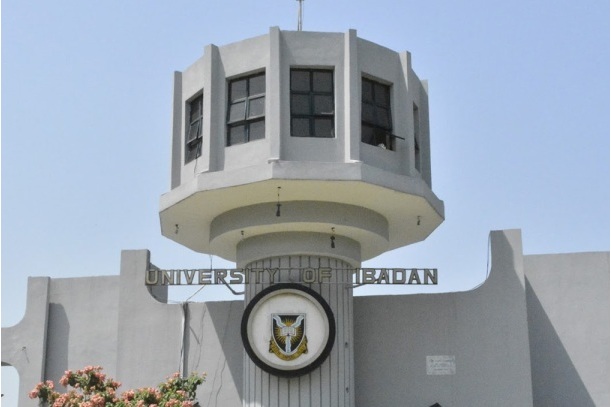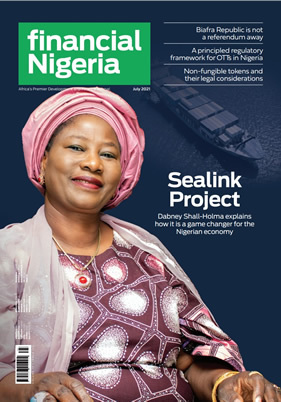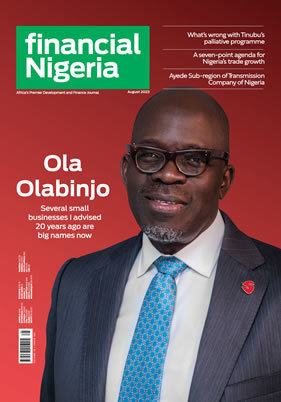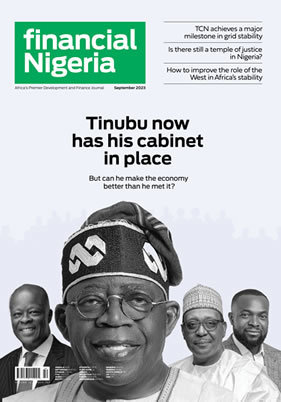Nigeria’s higher education institutions’ competitiveness, endowment and partnerships under scrutiny

Feature Highlight
“The collapse of education is the collapse of the nation.”
Trust me, I did not set out to bore you with a long quote, but for want of a shorter and more apt phrase that best introduces my narrative here, I am constrained to bring to your attention a write up popularly associated with a South African University’s entrance gate:
“Destroying any nation does not require the use of atomic bombs or the use of long range missiles...it only requires lowering the quality of education and allowing cheating in the examinations by students...Patients die at the hands of such doctors...Building collapse at the hands of such engineers...Money is lost at the hands of such economists and accountants...Humanity dies at the hands of such religious scholars...Justice is lost at the hands of such judges...The collapse of education is the collapse of the nation.”
Nothing more in the above statements captures better the consequence of a poor education system than the closing sentence. And it is also very significant that it is associated with a university.
One of the ways to ensure that Nigeria’s higher education does not irredeemably collapse is for the key education stakeholders to deliberately and collectively choose and commit to staying competitive with the best systems in the world.
But how does a country’s higher education system like ours stay competitive with the best in the world? That is the million-dollar question.
This brings me to the experiences I had following the National Higher Education Forum 2018. After the 2018 edition of the annual forum, I had the privilege of making presentations to a few public higher education institutions in Nigeria, sharing ideas and strategies on how Nigeria’s higher education institutions can become more competitive.
During those presentations, I observed a key subject, an issue which more than anything else, captured the attention of the leadership of those institutions – endowment funds. For some the crux was about how to properly establish it, for others it was more about growing the size of their poorly structured endowment funds.
To both categories, here is my simple message: it is impossible to be a competitive higher education institution without a solid financial base, and you cannot have a solid financial base without solid partnerships, and you cannot have solid partnerships without effective engagements with – and significant value addition to – both industry and community. The question which usually follows is, what do you mean?
My discussions with a few of those institutions often dovetailed into how I and my team could help them establish a functional and sustainable endowment fund. The key part of the prescription from us for achieving the above is a detailed cost analysis.
Interestingly, every time the subject of cost came up, everyone always thought that it was all about “how much money” it will cost to do the job. On the contrary, it is far more than that. In fact, monetary cost comes last on our prescription list.
I will briefly outline some of the cost items as follows: one, leadership: Is the institution’s leadership ready to be accountable? Two, vision and strategic plan: How aligned are the activities and decisions of the institution to its vision and strategic plan (where it exists)? Three, brand: What is the level of investment in brand positioning of the institution – how is this reflected in its communication, identity, environment, student and staff experience? Four, excellence: What is the level of institution’s commitment to continuous improvement, internal reforms, transparency – does the institution publish its annual reports? Does it have well run recruitment and reward systems? Five, connection and impact: Are there structures and systems in place to periodically evaluate the institution’s connection to and impact on local, regional, national and international economic and social spaces? For me, these are the real costs.
The degree to which an institution is ready to invest in the above prescribed items determines its preparedness to the work of growing its endowment fund. As I stated earlier, succeeding with the above prescription is a precondition for becoming a competitive institution.
Sadly, this is usually where discussions end, because, in summary, the costs are considered way too high and unattainable. The institutions would rather remain in their comfort zones – merely doing just about 10 per cent of what is possible.
This may surprise you, but not me; it was reported that in 2013 Dr. Max Price, the then Vice Chancellor of the University of Cape Town, South Africa, visited Nigeria for fundraising, and within a year of his visit, his university received the sum of USD 5.2 million in endowments, which saw to the launch of the Olu Akinkugbe Business Law in Africa Fellowship (US$ 200,000) and Danjuma Fund for Law and Policy Development in Africa (US$5 million) for his University.
Imagine the disconnect, how many thriving companies in Nigeria are willing to appoint Nigerian-based academics to their boards? Yet, these academics are needed on boards to make a strong case for corporate donations to institutions when it matters.
During one of such presentations in a university close to Aba in Abia state, a few of the questions I asked the leadership of the institution were: one, what is your university’s strategy for Aba and Port Harcourt? Two, how does your institution plan to get involved in the ‘Made in Aba’ drive? The answers? There were none!
To have the National Higher Education Forum 2020 agenda centred on competitiveness, endowment and partnerships is quite interesting. I only hope that all the tertiary institutions in Nigeria and other key stakeholders will participate in their numbers to gain valuable insights and explore possibilities on these critical issues, and more.
Odinaka Iloh is the Interim CEO, Centre for Higher Education, Innovation and Development
Other Features
-
How much is a $100 Steam Gift Card in naira today?
2026 Complete Guide to Steam Card Rates, Best Platforms, and How to Sell Safely in Nigeria.
-
Trade-barrier analytics and their impact on Nigeria’s supply ...
Nigeria’s consumer economy is structurally exposed to global supply chain shocks due to deep import dependence ...
-
A short note on assessing market-creating opportunities
We have researched and determined a practical set of factors that funders can analyse when assessing market-creating ...
-
Rethinking inequality: What if it’s a feature, not a bug?
When the higher levels of a hierarchy enable the flourishing of the lower levels, prosperity expands from the roots ...
-
Are we in a financial bubble?
There are at least four ways to determine when a bubble is building in financial markets.
-
Powering financial inclusion across Africa with real-time digital ...
Nigeria is a leader in real-time digital payments, not only in Africa but globally also.
-
Analysis of NERC draft Net Billing Regulations 2025
The draft regulation represents a significant step towards integrating renewable energy at the distribution level of ...
-
The need for safeguards in using chatbots in education and healthcare
Without deliberate efforts the generative AI race could destabilise the very sectors it seeks to transform.
-
Foundation calls for urgent actions to tackle fake drugs and alcohol
Olajide Olutuyi, Executive Director, Samuel Olutuyi Foundation, warns: “If left unchecked, the ‘death ...
Most Popular News
- NDIC pledges support towards financial system stability
- Artificial intelligence can help to reduce youth unemployment in Africa – ...
- Green economy to surpass $7 trillion in annual value by 2030 – WEF
- ChatGPT is now the most-downloaded app – report
- CBN licences 82 bureaux de change under revised guidelines
- Africa needs €240 billion in factoring volumes for SME-led transformation












